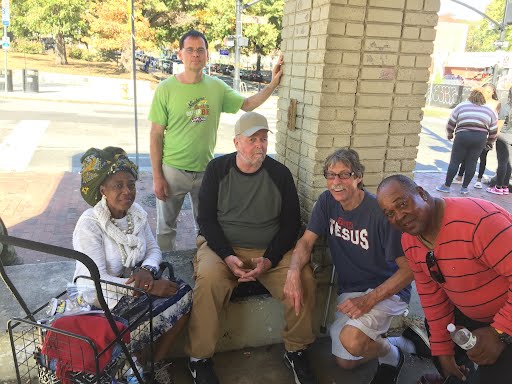Eating a Special Food on New Year’s Day?
When I was a little girl, my dad insisted that I eat at least one spoonful of black-eyed peas on New Year’s Day. It was supposed to bring good luck. I didn’t like them. Eating even a spoonful seemed like a high price to pay for good luck in the new year. Folks from the southern United States eat black-eyed peas on January 1st. Cornbread is another favorite in that section of the country. Eating green, leafy vegetables, supposed to resemble money, bring prosperity. Citizens in Spain eat 12 grapes at midnight. Each grape represents one month of the year. If the fifth and sixth grape taste especially bad, for example, May and June might be a little difficult. Germans, Austrians, and Hungarians—among others—eat pork on New Year’s. Pigs signify progress....
Read MoreFirst Children’s Christmas Party at the White House
by Sandra Merville Hart President John Adams and First Lady Abigail Adams didn’t have the warmest of homes at the White House in 1800. Their Pennsylvania Avenue home, built near a swamp, was drafty and cold. Large fires crackled in thirteen fireplaces to warm their home. In 1800, as Christmas approached the President and First Lady decided to host a children’s Christmas party. Their four-year-old granddaughter, Susanna Boylston Adams, lived with them and they wanted to honor her. Greenery was hung to decorate the East Room. Government officials and their children were invited to the party. A small orchestra played while guests munched on cakes and drank punch. They sang Christmas carols and played games. The party was a great success with one exception. One of...
Read MoreOh, Bring Us a Figgy Pudding
by Sandra Merville Hart We sing the familiar Christmas tune, “We Wish You a Merry Christmas,” every year. If those early carolers refused to leave until they received a serving, it must be delicious. When did folks originally sing this song? The song is believed to date back to England in the 1500s. Carolers sang to their neighbors with greetings of the season. They hoped wealthy citizens would give them a treat, such as figgy pudding, to thank them for singing to them. The song, “Here We Come A-wassailing,” asked for a drink from rich neighbors’ wassail bowl, an invitation to warm themselves around the fire, and maybe a pork pie. “We Wish You a Merry Christmas” specifically requests Figgie Pudding. The tradition of making this dessert at Christmas...
Read MoreWhat Did the Magi Eat on Their Journey?
by Sandra Merville Hart The Bible tells us in Matthew 2:1 that Magi from the east came to Jerusalem after Jesus was born in Bethlehem. It doesn’t give an exact location. Yet northern Arabia, Syria, and Mesopotamia were considered the “east” by the Jews. What might they have eaten along the way? Nuts, dates, and figs lasted a long time and were easy to pack on camels. They also needed to bring food and grain for their camels. The Magi may have traveled on sand dunes and desert for many miles. They’d also follow the rivers and streams as much as possible so they and their camels had plenty to drink. Folks living in the region likely shared water from their wells. When going through towns, they’d buy fresh bread, meat, fruits, and vegetables for the...
Read MorePresident George Washington Declares a Day of Thanksgiving
by Sandra Merville Hart The Revolutionary War was over. Leaders wrote a new United States Constitution. The nation elected its first president. Peace reigned again. New Jersey Representative Elias Boudinot asked that Congress pass a resolution to request that President George Washington declare a thanksgiving observance. Congress passed the resolution. President Washington liked the idea and agreed. On October 3, 1789, Washington issued a proclamation that Thursday, November 26th was to be a national day of thanks to God. He reminded Americans that God’s care had led them through the Revolution and helped them establish a new government and Constitution. Washington sent the proclamation to state governors. Newspapers printed it to tell citizens about it. There...
Read MoreVeterans Day
Did you know … Veterans Day was originally called Armistice Day. Armistice is a big word that means two armies at war with each other agree to stop fighting, at least for a specific amount of time. November 11, 1918 World War I was known as “the Great War” until World War II. At 11:00 am on November 11, 1918, the armies agreed to stop fighting. A Legal Holiday November 11th became a legal holiday called Armistice Day in 1938. Moment of Silence United States citizens honored soldiers of “the Great War” (World War I) with parades. They also paused for two minutes at 11 am for a moment of silence. People pray for the soldiers or think of them quietly during moments of silence. Tomb of the Unknown Soldier A World War I soldier was buried...
Read More










